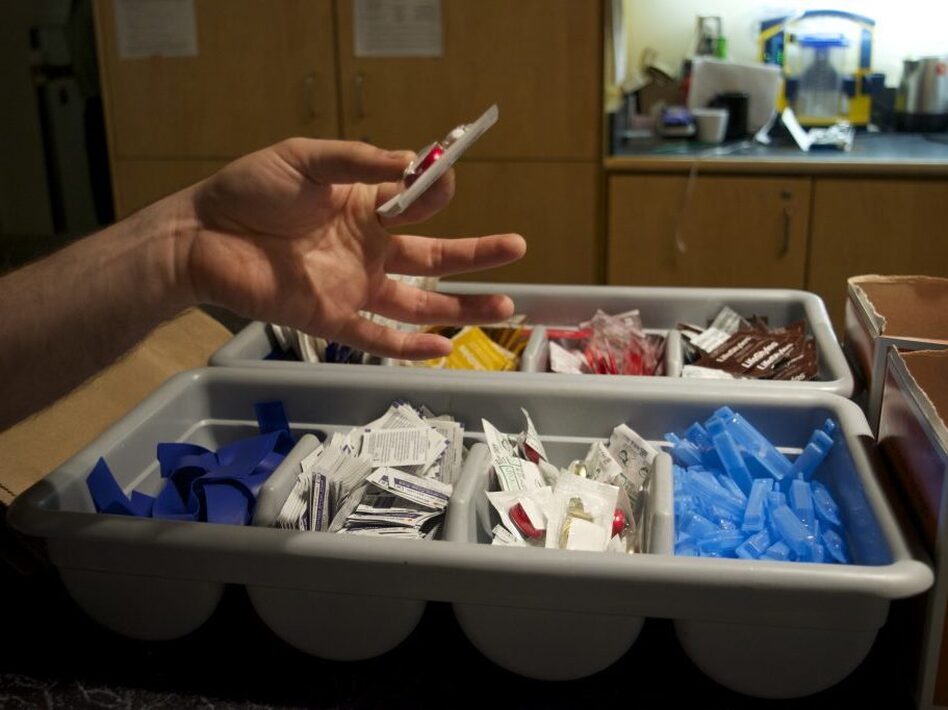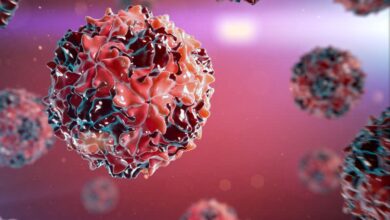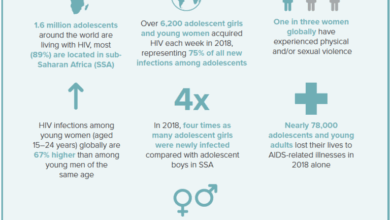
Supervised injection sites for drug users are a controversial yet potentially life-saving approach to harm reduction. This introduction explores the history of these sites, examining the evolution of harm reduction strategies and the concept of supervised injection in various global contexts. Different models of operation will be detailed, along with a comparative analysis highlighting key features and challenges faced by each.
We’ll also discuss the public health benefits and impacts, including the reduction of overdose deaths and infectious diseases like HIV and Hepatitis C.
From the social and community aspects, to operational procedures, legal frameworks, and ethical considerations, this discussion will cover all aspects of supervised injection sites. We’ll delve into the complexities of community reactions, operational structures, and the vital role of staff training and safety protocols. The legal landscape surrounding supervised injection sites will be explored, comparing and contrasting approaches across different jurisdictions.
Ultimately, this in-depth analysis will evaluate the ethical implications, challenges, and potential future directions of this critical public health intervention.
Introduction to Supervised Injection Sites
Supervised injection sites (SIS) are a relatively recent but rapidly evolving approach to harm reduction for people who inject drugs. They represent a significant shift from traditional approaches that often focused on criminalization rather than addressing the underlying issues contributing to drug use. This shift acknowledges the complex interplay of social, economic, and health factors that shape drug use behaviors.The evolution of approaches to harm reduction has been a journey marked by shifting perspectives and a growing recognition of the importance of providing support and resources rather than solely punitive measures.
Early approaches often focused on abstinence-based programs, but these have proven less effective than more holistic and person-centered interventions. Harm reduction, as a philosophy, prioritizes minimizing the negative consequences associated with drug use, recognizing that complete abstinence isn’t always achievable or desirable for all individuals.
History of Supervised Injection Sites
The concept of supervised injection sites has a history rooted in a growing understanding of harm reduction principles. Early models emerged in response to the recognition that simply criminalizing drug use was not addressing the underlying causes of the problem and was often ineffective in reducing the spread of infectious diseases among intravenous drug users. The concept gained traction in the late 20th century, initially in Europe and later spreading to North America and other parts of the world.
Early sites often faced significant opposition from various sectors of society, including those concerned about public health and safety. However, the evidence increasingly demonstrated the positive impact of these sites.
Evolution of Harm Reduction Approaches
Harm reduction strategies have undergone a significant evolution. Early approaches primarily focused on preventing the spread of infectious diseases, particularly HIV and Hepatitis C. Later, the scope broadened to include providing support services, such as access to mental health care, addiction treatment, and social services. This expanded approach reflects a deeper understanding of the complex factors influencing drug use.
The increasing recognition of the interconnectedness of health, social, and economic factors has led to more comprehensive harm reduction strategies.
Concept of Harm Reduction in Relation to SIS
Harm reduction, in the context of supervised injection sites, focuses on minimizing the health risks associated with drug use. This includes preventing the spread of blood-borne diseases, reducing overdose deaths, and connecting users with vital health and social services. SIS are seen as a safe space where users can inject drugs under the observation of trained staff, minimizing the risk of accidental overdose and enabling access to immediate medical intervention if needed.
This approach is based on the idea that providing a safe and supportive environment is crucial for reducing the harm associated with drug use.
Different Models of SIS Operations Around the World
Supervised injection sites operate under various models, each tailored to the specific context and needs of the community. Factors such as local regulations, community support, and available resources play a significant role in shaping the design and implementation of these sites.
Comparison of SIS Models
| Location | Model Type | Key Features | Challenges |
|---|---|---|---|
| Vancouver, Canada | Comprehensive Model | Extensive support services, including health care, mental health support, and social services. High emphasis on connecting users with long-term care. | Maintaining high-quality services and staffing in a dynamic environment. Addressing the potential stigma associated with accessing services. |
| Amsterdam, Netherlands | Integrated Model | Close integration with existing healthcare and social services. Strong focus on user-centered care and self-determination. | Balancing the needs of diverse user groups while maintaining operational efficiency. Ensuring effective communication and collaboration between different service providers. |
| Sydney, Australia | Specialized Model | Focus on providing specific support to users with particular needs, such as those experiencing homelessness or mental health issues. | Ensuring equitable access to services for all users, regardless of their background. Maintaining the site’s capacity to respond to the diverse range of needs. |
| Berlin, Germany | Community-Based Model | Close collaboration with local communities and organizations. Emphasizes community participation and ownership of the site. | Gaining community acceptance and overcoming local opposition. Balancing the needs of the site with the broader community concerns. |
Public Health Benefits and Impacts
Supervised injection sites (SIS) are increasingly recognized as a crucial public health intervention. They offer a safe and controlled environment for individuals who inject drugs, significantly improving their health and well-being. This approach aims to reduce harm associated with drug use, leading to a multitude of positive impacts on the broader community.The benefits of SIS extend beyond the individual user, fostering a healthier and safer environment for everyone.
By providing a structured, monitored setting, SIS address immediate public health concerns like overdose and the spread of infectious diseases, while also potentially reducing crime rates.
Overdose Prevention
SIS play a vital role in reducing overdose deaths. Trained staff are readily available to monitor users and administer immediate life-saving interventions, such as naloxone, in the event of an overdose. This immediate response significantly improves survival rates compared to situations where users inject alone. Data consistently demonstrates that SIS locations experience lower rates of overdose fatalities than comparable areas without such facilities.
The proactive nature of SIS in addressing overdoses contributes substantially to a reduction in preventable deaths.
Reduction of Infectious Diseases
SIS are equipped with sterile equipment and disposal services, which significantly limit the spread of infectious diseases like HIV and Hepatitis C. Users are encouraged to use clean equipment, and staff can educate them on safe injection practices. The provision of clean needles and syringes, combined with access to testing and treatment programs, is a powerful tool in the fight against these infectious diseases.
Statistical data consistently shows a decrease in the incidence of blood-borne infections among users who frequent SIS compared to comparable groups without access to these facilities.
Impact on Crime Rates, Supervised injection sites for drug users
The presence of SIS can contribute to a decrease in crime rates. By providing a safe space for drug use, SIS remove drug-related activities from public spaces. This can lead to a reduction in drug-related crimes, such as theft and property damage. Furthermore, the potential for violence and crime associated with drug-related conflicts and disputes is lessened.
Studies have shown a correlation between the implementation of SIS and a decline in these types of crimes in the surrounding areas.
Impact on Different Demographics
| Demographic Group | Impact | Supporting Evidence |
|---|---|---|
| Individuals with substance use disorders | Reduced overdose deaths, access to harm reduction services, improved health outcomes | Studies consistently show lower overdose rates and improved health outcomes in areas with SIS. |
| Communities surrounding SIS | Reduced crime rates, improved public safety, fewer drug-related incidents in public spaces | Multiple studies have demonstrated a correlation between the presence of SIS and a reduction in crime in surrounding neighborhoods. |
| Healthcare providers | Reduced strain on emergency services, improved access to care for drug users | Emergency rooms and hospitals often see a decrease in overdose-related visits in areas with SIS. |
Social and Community Aspects
Supervised injection sites (SIS) are not just about providing a safe space for drug users; they deeply impact the communities surrounding them. Understanding the diverse reactions and perceptions within a community is crucial for successful implementation. Successful programs require a deep understanding of the community’s needs, fears, and hopes, and active engagement to address concerns. This involves more than just informing the community; it necessitates a genuine dialogue and collaboration.Community perceptions of SIS vary widely, often influenced by misinformation and fear.
Some may view them as a public health necessity, while others may oppose them due to concerns about increased crime, public disorder, or the normalization of drug use. Successful implementation hinges on proactively addressing these concerns and building trust within the community.
Community Reactions and Perceptions
Community reactions to SIS can range from enthusiastic support to staunch opposition. Factors influencing these reactions include existing social structures, levels of trust in authorities, and past experiences with drug use and related issues within the community. Negative perceptions can be fueled by misinformation, anxieties about potential increases in crime or public health risks, and a lack of understanding about the benefits of SIS.
Positive perceptions, on the other hand, are often associated with community members who see the sites as a crucial step towards reducing overdose deaths and improving the health and well-being of vulnerable populations.
Community Engagement in SIS Implementation
Community engagement is paramount in the successful implementation of SIS. A comprehensive engagement strategy should include open forums, town halls, and direct outreach to community leaders and organizations. This proactive approach helps build consensus, address concerns, and create a shared understanding of the benefits and challenges associated with SIS.
Examples of Successful Community Outreach Programs
Numerous examples exist of successful community outreach programs related to SIS. These programs often involve local community groups, health professionals, and law enforcement collaborating to provide accurate information, address misconceptions, and foster open dialogue. One example involves a community group organizing a series of public presentations to share factual information about SIS, dispelling myths, and answering questions from residents.
Another model emphasizes partnerships with local businesses and community organizations to address concerns about potential impacts on local businesses and safety. In both cases, these outreach efforts emphasized transparent communication and active listening.
Potential Challenges in Community Acceptance and Integration
Despite the potential benefits, SIS implementation faces significant challenges related to community acceptance. Misinformation and fear of negative consequences, including increased crime and public disorder, can lead to opposition. Successfully overcoming these challenges requires meticulous planning, open communication, and proactive strategies to address public concerns.
Supervised injection sites are a crucial part of harm reduction strategies for drug users. While these sites offer a safe and controlled environment, it’s important to consider the broader health implications, like the recent study highlighting a significantly higher risk of cardiovascular disease in people with ADHD. This study underscores the complex interplay of factors impacting overall health, and ultimately, the importance of addressing these needs within supervised injection sites to provide comprehensive support for vulnerable populations.
Factors Contributing to Community Opposition or Support
Factors contributing to opposition or support for SIS are diverse and interconnected.
- Misinformation and fear: Inaccurate information about SIS, often circulating through social media and informal channels, can fuel fear and opposition. Addressing these concerns through factual information and community dialogue is essential.
- Public health concerns: Some communities might be concerned about the potential impact on public health, such as the spread of infectious diseases. Addressing these concerns with data on the effectiveness of infection control measures and the health benefits of SIS is crucial.
- Economic concerns: Potential impacts on local businesses and the local economy can be a concern. Demonstrating the economic benefits of SIS, such as reduced healthcare costs and decreased crime rates, is vital.
- Safety concerns: Concerns about increased crime or public disorder are common. Data demonstrating a lack of significant negative impacts on safety, alongside clear safety protocols within the SIS, is critical to addressing these concerns.
- Community trust: A strong sense of community trust in local authorities and healthcare providers is crucial for acceptance. Building trust through transparent communication, collaboration, and active community participation is essential.
Operational Structure and Procedures: Supervised Injection Sites For Drug Users
Supervised injection sites (SIS) are more than just a place for drug users; they are carefully designed environments aimed at minimizing harm and maximizing public health. A key component of their effectiveness lies in their meticulously planned operational structure and procedures. These protocols are not simply guidelines; they are the foundation upon which the site’s safety, efficiency, and positive impact are built.
Staff Roles and Responsibilities
A dedicated and trained staff is essential for the smooth operation of an SIS. Various roles, each with specific responsibilities, contribute to the site’s overall success. These roles include nurses, social workers, outreach workers, security personnel, and administrative staff. Nurses are responsible for monitoring users’ health and administering overdose reversal medications like naloxone. Social workers provide support and guidance, linking users with resources for treatment and recovery.
Outreach workers build rapport with the community and promote harm reduction strategies. Security personnel ensure the safety and security of the site. Administrative staff handles paperwork, scheduling, and financial management.
Staff Training and Qualifications
Staff working in SIS require specialized training and qualifications to handle the complex needs of the users. Comprehensive training programs are crucial to ensure staff members possess the necessary skills and knowledge to perform their duties effectively. These programs typically cover topics such as overdose prevention and reversal, substance use disorders, mental health, harm reduction strategies, and emergency medical procedures.
Certification in related fields, such as nursing, social work, or substance abuse counseling, is often a requirement. Specific training in handling challenging situations, such as aggression or conflict, is also vital.
Security Protocols and Safety Measures
Robust security protocols are essential to maintain a safe and controlled environment within an SIS. These protocols include security cameras, controlled access points, and trained security personnel to monitor the premises and prevent unauthorized entry or disruptive behavior. The physical design of the site often incorporates safety features like secure storage areas for naloxone and other medications, and dedicated spaces for staff and users.
Strict adherence to confidentiality protocols protects the privacy and anonymity of the users.
Standard Operating Procedures for Overdose Management
A well-defined protocol for managing overdose situations is critical in an SIS. These procedures ensure swift and effective action to save lives.
| Situation | Procedure | Necessary Resources |
|---|---|---|
| User reports feeling unwell, experiencing symptoms of overdose | Staff immediately assess the user’s condition. If the user is unresponsive, begin CPR and administer naloxone. Continuously monitor vital signs and ensure the user receives prompt medical attention. | Naloxone, CPR training, defibrillator, medical-grade oxygen, communication device to alert emergency services. |
| User is unresponsive and experiencing an overdose | Immediately initiate CPR. Administer naloxone according to protocol. Monitor the user’s vital signs and administer further medical aid as needed. Contact emergency medical services. | Naloxone, CPR training, defibrillator, medical-grade oxygen, communication device to alert emergency services, AED. |
| User is experiencing an overdose and has a history of mental health conditions | Staff should prioritize the user’s mental health concerns. Administer naloxone and coordinate with mental health professionals if necessary. Follow established protocols to ensure a safe and appropriate response. | Naloxone, mental health professional contact information, emergency medical services, medication list of the user. |
Legal and Regulatory Frameworks
Navigating the legal landscape surrounding supervised injection sites (SIS) is crucial for their successful implementation and sustainability. The legal frameworks vary significantly across jurisdictions, often reflecting differing public health priorities, social attitudes towards drug use, and political considerations. Understanding these complexities is essential for proponents and stakeholders to advocate for, and ultimately implement, these vital public health initiatives.
Legal Frameworks Surrounding SIS
Different legal systems have varying approaches to SIS. Some jurisdictions view them as essential public health interventions, while others face considerable legislative hurdles. This disparity in legal approaches often reflects diverse societal views on drug use and harm reduction strategies. The legal environment surrounding SIS frequently includes criminal justice concerns, public health concerns, and community acceptance concerns.
These diverse and sometimes conflicting concerns influence the specific legal frameworks surrounding SIS in different locations.
Legislative Challenges in Establishing and Maintaining SIS
Establishing and maintaining SIS faces significant legislative challenges. Concerns about public safety, potential increases in drug use, and the perceived stigma associated with drug use often impede the passage of legislation. These concerns frequently overshadow the potential health benefits of SIS, leading to legislative roadblocks. Furthermore, differing interpretations of existing laws and the need for new legislation to accommodate SIS further complicate the process.
The legislative challenges highlight the importance of building public support and addressing community concerns to overcome these hurdles.
Supervised injection sites are gaining traction as a way to reduce overdose deaths among drug users. It’s a complex issue, and often, the conversation also needs to address the underlying mental health issues contributing to substance use. For instance, my recent letter to my office mental health team letter to my office mental health touched on the importance of creating a supportive environment at work.
Ultimately, comprehensive solutions, including access to safe injection sites, are crucial for helping people struggling with addiction.
Comparative Legal Approaches to SIS
Legal approaches to SIS vary across countries. Some countries have relatively permissive legislation that facilitates the establishment and operation of SIS, while others have stringent regulations that limit or prohibit them. For example, jurisdictions with a history of prioritizing public health interventions often have more supportive legal frameworks. In contrast, jurisdictions with a history of punitive approaches to drug use may have more restrictive legal frameworks.
This comparison demonstrates the need for tailored approaches to legal frameworks that consider the specific social and political contexts of each jurisdiction.
Potential Legal Hurdles in Expanding Access to SIS
Expanding access to SIS faces several potential legal hurdles. These include concerns about potential increases in drug use, the need for comprehensive risk assessments, and ensuring compliance with existing regulations. Furthermore, maintaining the safety and security of SIS operations while accommodating evolving needs of the user population can present challenges. Addressing these hurdles requires careful planning, community engagement, and a robust legal framework.
For example, concerns about attracting new users to a SIS or the need for additional security measures to address the unique needs of the user population should be addressed in a holistic and proactive manner.
Legal Status of SIS in Different Countries
| Country | Legal Status | Key Legislation |
|---|---|---|
| Canada | Legal (in some jurisdictions) | Provincial/territorial health legislation |
| Netherlands | Legal | Various health and drug policy laws |
| Portugal | Legal | Drug Decriminalization Law |
| United States | Highly variable (legal in some cities/counties) | Local ordinances and public health regulations |
| United Kingdom | Legal in some areas | Local health and safety regulations |
This table provides a snapshot of the legal status of SIS in selected countries. It’s important to note that the legal landscape is dynamic and varies considerably even within countries. Further research is necessary to obtain the most up-to-date information on specific legislation and policies.
Supervised injection sites are a hot topic, and while they’re designed to save lives, it’s interesting to consider how businesses are adapting to new trends. For example, Hormel and Kellogg’s are jumping into the fake meat business, hormel kelloggs getting into the fake meat business , a shift in consumer demand. Ultimately, these innovations, like supervised injection sites, highlight evolving societal needs and the potential for businesses to respond in meaningful ways.
The need for safe spaces for drug users remains a critical public health concern.
Ethical Considerations and Arguments

Supervised injection sites (SIS) are a complex issue, laden with ethical considerations. While promoting public health and harm reduction, they also spark debate regarding individual responsibility, societal values, and the role of the state in managing drug use. This section delves into the ethical arguments surrounding SIS, examining potential dilemmas, and outlining guidelines for responsible implementation.Ethical arguments for and against SIS often center on competing values.
Proponents emphasize the life-saving potential of harm reduction, arguing that SIS reduces overdose deaths and the spread of infectious diseases. Opponents raise concerns about normalization of drug use and potential for increased drug use or other societal problems, sometimes citing anecdotal evidence that is often not supported by rigorous research.
Ethical Arguments for Supervised Injection Sites
SIS advocates often emphasize the ethical imperative to prioritize public health and well-being. They argue that access to safe injection environments is a fundamental human right, and that these sites provide a crucial service for vulnerable populations struggling with addiction.
- Public Health and Harm Reduction: SIS demonstrably reduce overdose deaths and the spread of infectious diseases like HIV and hepatitis C. This direct impact on public health is often considered a strong ethical justification for their implementation.
- Minimizing Social Harm: By reducing the risk of overdose and infection, SIS can prevent further social harm to individuals and communities. This includes reducing the burden on healthcare systems and social services.
- Respect for Individual Autonomy: Proponents argue that SIS respect individual autonomy by providing a safe space for people to make choices about their health, even if those choices involve substance use.
Ethical Arguments Against Supervised Injection Sites
Opponents of SIS frequently raise concerns about potential unintended consequences and the impact on societal values.
- Normalization of Drug Use: Some argue that SIS may inadvertently normalize drug use, potentially encouraging individuals to engage in risky behavior.
- Potential for Increased Drug Use: Critics fear that readily available, safe injection sites may increase drug use by lowering the perceived risks associated with injection.
- Financial Costs and Resource Allocation: Implementing and maintaining SIS can be expensive, potentially diverting resources from other critical public health initiatives.
Ethical Dilemmas Faced by SIS Staff
SIS staff face unique ethical dilemmas due to the sensitive nature of their work.
- Confidentiality and Disclosure: Balancing the need for confidentiality with the potential legal or ethical obligation to report concerning behaviors or potential harm poses a significant challenge.
- Maintaining Objectivity: Maintaining a neutral stance, free from judgment or bias towards the clients, is crucial for ethical practice and builds trust.
- Dealing with Difficult Behaviors: Staff may encounter clients who exhibit challenging behaviors, requiring a nuanced and ethical approach to conflict resolution.
Ethical Guidelines for Managing Difficult Situations
Clear ethical guidelines are essential for ensuring appropriate and responsible behavior by staff.
- Training and Support: Comprehensive training programs should equip staff with the skills and knowledge to navigate difficult situations ethically.
- Multidisciplinary Collaboration: Collaboration with other agencies, such as healthcare providers, social workers, and law enforcement, is vital for a holistic approach to client support.
- Regular Ethical Review: Ongoing ethical review of SIS operations, including staff performance, is critical to identify areas for improvement and prevent harm.
Different Perspectives on the Ethical Implications of SIS
Different stakeholders, including public health officials, policymakers, community members, and drug users, hold varying perspectives on the ethical implications of SIS.
- Public Health Perspective: A public health perspective emphasizes the importance of harm reduction and the potential for SIS to save lives.
- Community Perspective: Community concerns often focus on the potential impact of SIS on neighborhoods and the perceived social costs.
- Individual User Perspective: Users themselves often highlight the safety and privacy offered by SIS, as well as the access to crucial health services.
Role of Ethical Review Boards in the Implementation of SIS
Ethical review boards play a crucial role in ensuring that SIS are implemented in a manner that is ethical, transparent, and accountable.
- Independent Oversight: Ethical review boards provide independent oversight to ensure the ethical conduct of SIS.
- Evaluation of Policies: They evaluate the policies and procedures of SIS, assessing their impact on clients and the wider community.
- Recommendations for Improvement: Ethical review boards offer recommendations for improving the implementation of SIS, based on ethical considerations and evidence-based practices.
Challenges and Future Directions

Supervised injection sites (SIS) are a crucial public health intervention, but their implementation faces numerous challenges. Overcoming these obstacles is vital for maximizing their effectiveness and expanding their reach to more communities in need. This section explores the key difficulties and potential future avenues for SIS development.
Primary Challenges Faced by SIS
The successful operation of SIS is not without hurdles. Funding limitations, community opposition, and bureaucratic hurdles are among the prominent issues. These factors can hinder the site’s ability to provide essential services, impacting the overall effectiveness of the program. Furthermore, ensuring adequate staffing with trained personnel is critical to providing quality care and support. A shortage of qualified personnel can lead to burnout and compromised service quality.
Maintaining the safety and security of both clients and staff is paramount. Adequate security measures, including surveillance and emergency protocols, are essential to mitigate potential risks. Balancing the needs of different stakeholders, including clients, community members, and staff, is crucial for program sustainability.
Future Directions for SIS Development and Expansion
Expanding SIS programs necessitates careful planning and a forward-thinking approach. Strategic partnerships with community organizations and healthcare providers can enhance outreach and service delivery. The integration of SIS into existing healthcare systems can improve access to comprehensive care and support services. Innovations in technology, such as telehealth platforms and mobile health units, can improve accessibility, particularly for individuals in underserved areas.
Addressing the stigma surrounding drug use is essential for creating a more supportive and accepting environment for clients. Promoting public education and dispelling misinformation can foster understanding and reduce societal barriers.
Potential for Innovative Solutions and Strategies for SIS
Innovative solutions can address the challenges and enhance the effectiveness of SIS. Developing mobile SIS units can increase accessibility for individuals in remote or underserved communities. Utilizing data analytics to track client outcomes and program effectiveness can inform future improvements. Integrating harm reduction strategies, such as naloxone distribution and overdose prevention training, into SIS programs can enhance safety and improve client outcomes.
Integrating mental health services into SIS can address the co-occurring mental health conditions often experienced by individuals who use drugs. Exploring alternative funding models, such as grants and philanthropic support, can address financial constraints and sustain program longevity.
Importance of Ongoing Research and Evaluation in SIS
Rigorous research and evaluation are essential for the continuous improvement of SIS. Data collection and analysis can provide valuable insights into the program’s impact on client outcomes, community health, and resource allocation. Comparative studies can identify best practices and highlight successful strategies. This data-driven approach can inform policy decisions and support the development of more effective and sustainable SIS programs.
Implementing robust evaluation frameworks can ensure accountability and transparency.
Potential Future Developments in SIS Models
| Proposed Innovation | Potential Impact | Challenges |
|---|---|---|
| Mobile SIS units | Increased accessibility to vulnerable populations in remote or underserved areas, reduced transportation barriers. | Maintaining consistent staffing and resources, ensuring regulatory compliance in different locations. |
| Telehealth integration | Enhanced access to support services, particularly for individuals who face geographical limitations or scheduling constraints. | Ensuring client confidentiality and security in remote interactions, addressing digital literacy concerns. |
| Integration of mental health services | Improved overall health outcomes, reduced risk of relapse, and enhanced support for individuals with co-occurring disorders. | Finding qualified mental health professionals, ensuring seamless referral pathways within the healthcare system. |
| Data analytics for program evaluation | Improved understanding of client needs and program effectiveness, allowing for targeted interventions and resource allocation. | Ensuring data privacy and security, securing funding for data analysis and interpretation. |
Closing Summary
In conclusion, supervised injection sites, while facing considerable challenges, offer a multifaceted approach to harm reduction. The public health benefits, including reduced overdose deaths and infectious diseases, are compelling. However, careful consideration of community engagement, operational procedures, legal frameworks, and ethical implications is paramount. This discussion has highlighted the need for ongoing research, evaluation, and innovative solutions to ensure the successful and ethical implementation of supervised injection sites in communities worldwide.
Further research is crucial to navigate the complex interplay of public health, social justice, and ethical considerations.




